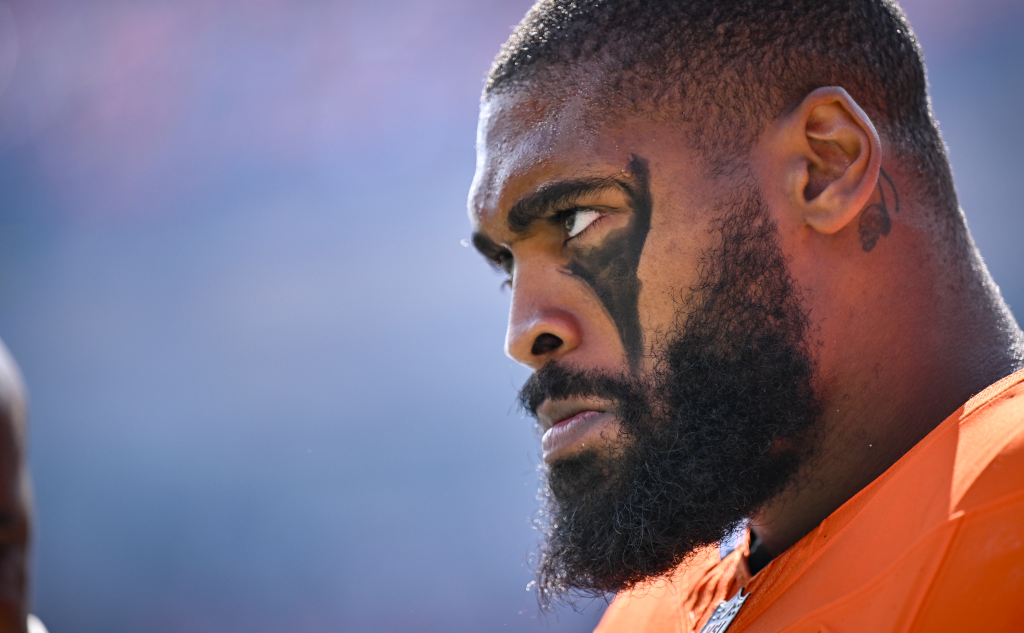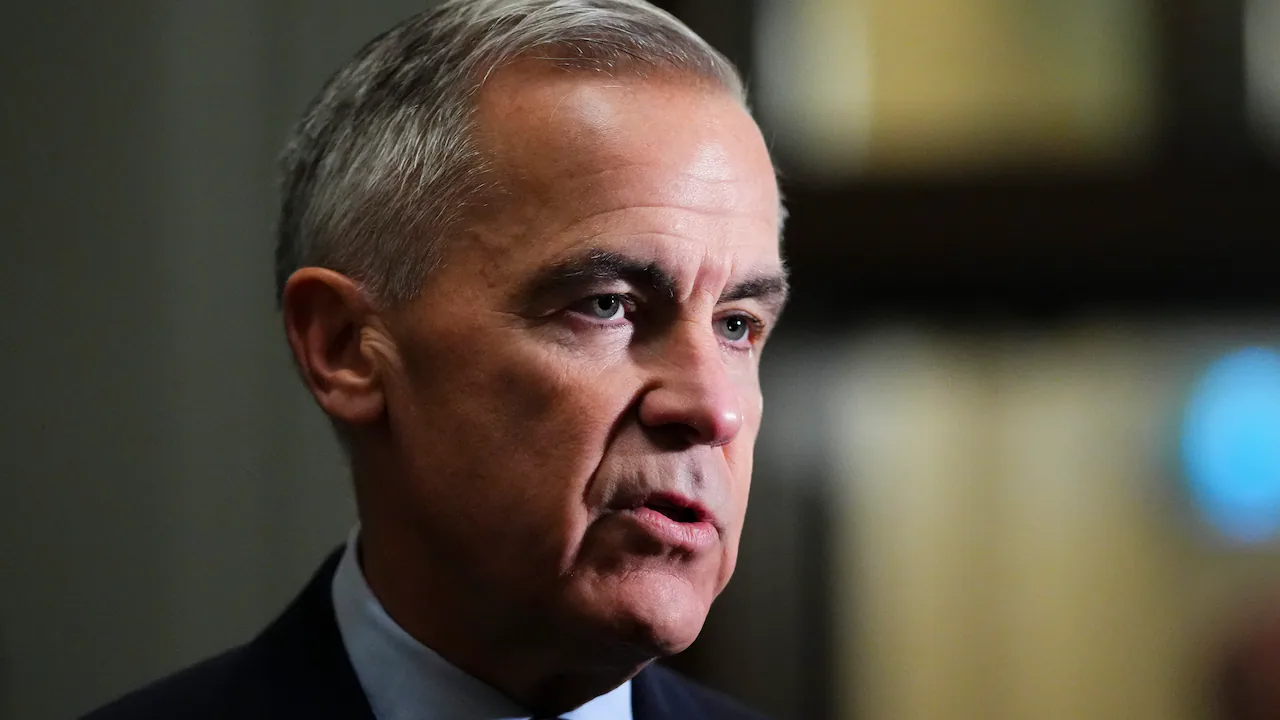Copyright The Denver Post

Sometimes, Jonathon Cooper irritates the people who love him. The fourth year of Cooper’s Broncos career ended in splendor last season. He set a career high with 10.5 sacks and signed a four-year extension worth $60 million, changing his and his family’s lives forever. Bruce Ward, Cooper’s old high school coach back at Gahanna-Lincoln High in Ohio and still a friend, gave him a call to offer his congratulations. Man, that’s a great season. Cooper didn’t bite. I gotta be better, he told Ward. I want the sack lead next year. “Okay, Coop, I hear you,” Ward remembered telling him, “but it’s February, man.” Nah, Coach, Cooper insisted. I gotta be better. “Like, just relax and enjoy the offseason, you had a great season,” Ward said months later, reflecting. “‘Cause, you’ve outlived the expectation.” In late October, the Broncos outside linebacker sat in his locker in Denver, far beyond the expectation. Far beyond the boy who was born nine weeks early to a mother, Jessica, who hadn’t finished high school. Far beyond the man who had two heart surgeries in high school, fell to the seventh round of the NFL draft five years ago, and had three more heart surgeries before he ever arrived in Denver. That past stays with him forever, Cooper reflected. It drives him. It drove him so far that he had to leave that motivation behind and find a new one. He is no longer an underdog story. The 27-year-old Cooper is knocking on the door of the NFL’s best, with six sacks through eight games in 2025. He wants to be the best in the league. A total of 238 players were drafted before Cooper in 2021. He now has more sacks through five years than all but one of them (Micah Parsons). Every camp, Broncos inside linebacker Justin Strnad said, brings a “new version of Coop.” This 2025 one is the best yet: The 257-pound Cooper has unlocked a potent speed-rush, with a faster average get-off time (0.74 seconds) than any of the NFL’s top 35 leaders in quarterback pressures, according to the NFL’s Next Gen Stats. For years, his strength coach Jackson Hayes said, Cooper was focused on measurables. I gotta get bigger. I gotta get faster. I gotta get stronger. Eventually, there was little left to unlock in his 6-foot-4 frame. But Cooper has ascended to the NFL’s elite because of his continued search for every minuscule mechanism of improvement — one that brought him this summer to a gym in Plain City, Ohio, and into the hands of a 24-year-old mental performance specialist. “I see my mom work,” Cooper told The Denver Post on Thursday. “My mom worked hard, like, really hard. Single mom. Really smart, independent woman who just worked her ass off. Like, truly, truly did. And she instilled that in me. “So, I’m not going to stop working,” he smiled. “Until I die.” ••• Every year, Ward tells Cooper’s story to his team at Gahanna-Lincoln. Specifically, one game in Cooper’s junior year, when he briefly lost his mouthguard. An official told Cooper he had to sit until he had a mouthpiece. He looked around, snatched a dangling mouthpiece from the facemask of the first teammate he saw, and re-entered the game. “Coop’s Coop,” Strnad said. “That’s the only way I could put it. He’s a different guy, you know what I mean? He thinks differently. Acts differently.” A couple of weeks before Cooper was set to rejoin the Broncos for camp, he was working with Hayes in July at his gym, the Relentless Collective, back in central Ohio. Across the way, a young trainer named Logan Scheider was working with a couple of high school baseball players, all sporting a wristband. The strap flashed white, and Scheider’s trainees opened their hands as quickly as possible. It flashed orange, and they kept their fingers tucked into a fist. Eventually, Cooper wandered over, interested. Scheider had just received a Master’s degree in sports and performance psychology at Pennsylvania Western University and moved up to Columbus, Ohio, to start his own business. For the most part, he began working with baseball players. Scheider’s company, LS Mental Performance LLC, has 134 followers on Instagram. But Cooper struck up a conversation with him, and Scheider suggested that the concept of training reaction time could be important to his quickness off the snap. That day, Cooper began telling Scheider about the purpose of his offseason. He just got paid. His expressed goal, Scheider recalled, was to prove he deserved that money. “He thought he could help me out,” Cooper recalled. “And he really did.” The outside linebacker slapped on one of the wristbands. Created by a company called Pison Technologies, they track the brainwaves of a user through light sensors, Scheider said. He had Cooper do an initial test. His overall reaction time was roughly .25 seconds behind Scheider’s high school baseball players. “Logan was explaining, like, ‘Man, the success he’s had in the NFL — I’m shocked that his reaction time is that slow,'” recalled Ward, who visited Cooper one day at Relentless Collective. “And that’s all you need to say to Cooper. It’s on, from then on out.” For the next week or so, Cooper wore a wristband and took its cognitive test at several points throughout his workout. Hayes, meanwhile, built specific reaction-time challenges into every phase of training. Sprints came on cue of a hand-clap. Bench-presses came on cue of a go–call. They ran change-of-direction drills where Cooper stood in the middle of a collection of multicolored cones, Hayes called “red,” and Cooper had to dart to the red cone. Eventually, they ran mock get-offs. And both his wristband cognitive-reaction time and his average get-off time dropped by about .15 seconds. By the end of his time in Ohio, before leaving for Denver, Cooper was trash-talking Scheider’s baseball group. It was hilarious, Scheider chuckled. These were 15-year-old kids. “I started beating them, and they was getting upset,” Cooper said. “‘Cause, like, that’s they whole thing. That’s they whole thing. So, like, the fact that I was beating some baseball players at it made me feel like I’m actually reacting fast, like I’m supposed to.” ••• Every year, Nate O’Neal tells Cooper’s story to his defensive-line group in pre-draft training at XPE Sports in Florida. Specifically, how Cooper earned himself a $60 million deal because a seventh-round pick simply never stopped developing. Back when Cooper was coming out of Ohio State, when all pass-rush expert O’Neal knew of him was his tape, he saw a good player. He saw a possible NFL starter. He did not see a 10-plus-sack-a-year guy, as O’Neal put it. Cooper rushed with wasted movement and played out of his natural position as a hand-in-the-dirt defensive end at Ohio State. He had just 10 sacks across five college seasons. Four years later, though, O’Neal’s appraisal of Cooper had changed. “I’ve had dudes go in the first (round) that can’t even hope to have his amount of success,” said O’Neal, a trainer who works with over 100 NFL or pre-draft clients a year. “I just knew at the end of the day that Coop was going to be okay, because he was always going to want to get better. … A lot of these cats can’t say that, man. “But Jonathon Cooper can.” In London in mid-October, with the Jets facing a do-or-die fourth down on their last drive of the game, Cooper toed the line a few yards off the ball. Jets quarterback Justin Fields went into his cadence, picking up and dropping his back foot. As soon as Fields’ cleats touched back down to the turf, Cooper ripped off the line, his first step coming before the snap even hit Fields’ hands. Rookie tight end Mason Taylor, trying to block, couldn’t even whip his head around fast enough before Cooper was already past him. Taylor grabbed at Cooper’s jersey like he was trying to catch a moving train, but Cooper took down Fields to seal a Broncos win. Cooper’s get-off time has shortened in every single season of his NFL career. That rep in London doesn’t happen in 2021, his rookie year. Maybe not even in 2024. “That’s what we was working on,” Cooper said when asked about that Jets sack. “That was like, all credit to that system, and what we were doing.” Reaction-time work, as Scheider explained, is much more prevalent in baseball, where modern hitters must train their brains to effectively pick up triple-digit mile-per-hour fastballs. The concept is no different for pass-rushers in the NFL. “It also aids decision-making,” Scheider said. “So, if Coop sees a tackle set a certain way, or set an angle the wrong way, Coop’s able to react.” Last Sunday, on one rep in a 44-24 drubbing of Dallas, Cooper burst from the outside against Cowboys right tackle Terence Steele. As Cooper approached, Steele’s right foot dropped behind him, anticipating a speed-rush to the outside. Without breaking stride or slowing, Cooper gave a one-two step and swam his arms past Steele back to the inside, getting on top of quarterback Dak Prescott and forcing an incompletion. Back in July, Scheider goaded on Cooper during workouts with comparisons to two of the pre-eminent pass-rushers in the NFL, Ward recalled. This is Micah Parsons time, Scheider said. This is Myles Garrett speed. Through eight weeks, Cooper now has a faster average get-off time than Parsons or Garrett. “If Coop finds something that motivates him or pushes him,” Ward said, “he’s never going to stop.” ••• By the end of his time at Gahanna-Lincoln, Cooper’s letterman jacket was stitched across the back with nods to his time on the football team. And the basketball team. It also read A capella. “Like, no other kid in America is walking around with those three on the back of their jacket,” Ward chuckled. Cooper was in the school choir since middle school, and was one of the group’s best bass singers, teacher Jeremy Lahman said. He prepared intensely for tryouts every year while also developing as a five-star football recruit. If anyone ever joked about it, Ward said, Cooper told them he was going to be great at singing. “I love music,” Cooper said. “So, yeah, it just kinda had me. So I mean, I enjoyed that. “And plus, the choir teacher was a hardass. So that’s what made it better.” Cooper has long found kinship with those who push him as hard as he pushes himself. O’Neal is an aggressive coach and self-described “not very likable guy.” Cooper has become his favorite player he’s ever had in draft prep. In Denver, rookie Sai’vion Jones — two lockers down from Cooper — has watched the veteran bicker constantly with his fellow outside linebackers for months. “When you see him all turnt up,” Jones grinned, “you don’t have no choice but to be turnt up with him.” Cooper told The Post he came into the year wanting a Pro Bowl, an All-Pro nod and 10-plus sacks. Maybe 15-plus. In training camp, Jones watched Cooper lose a rep, pull the offensive lineman aside to show him what he did, and then go pull rookie Que Robinson to stand in as a mock offensive lineman off to the side so he could drill it again. Cooper’s coaches and trainers acknowledge his physical gifts are limited: Not super long, not super tall, not super heavy, as Hayes said. And yet he is dominating. “It’s the only reason why I’m here, because of my mindset,” Cooper said. “So I don’t feel like I should change. I don’t want to change when it comes to that. And … there’s always something to get better at. “The moment you start feeling it, like, ‘Oh, I’m good, I’m fine,’ complacency starts to kick in,” Cooper continued. “It’s just human nature. So, if you keep the mindset of, ‘I have to get better,’ then you don’t even allow complacency to ever slip into your mind.” Legendary Ohio State defensive-line coach Larry Johnson still tells Cooper, often: He has two hearts beating in him. “Because he only knows one way to go,” Johnson said. “And that’s full speed ahead.”



